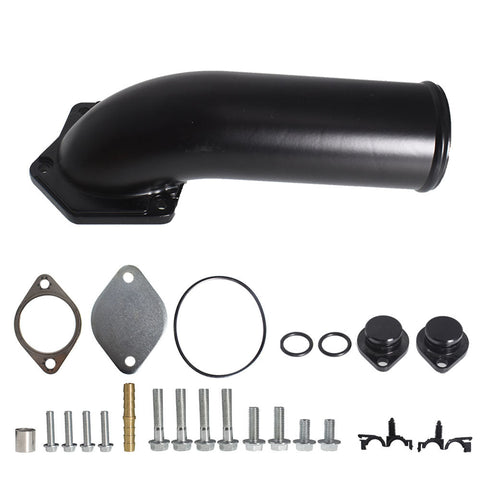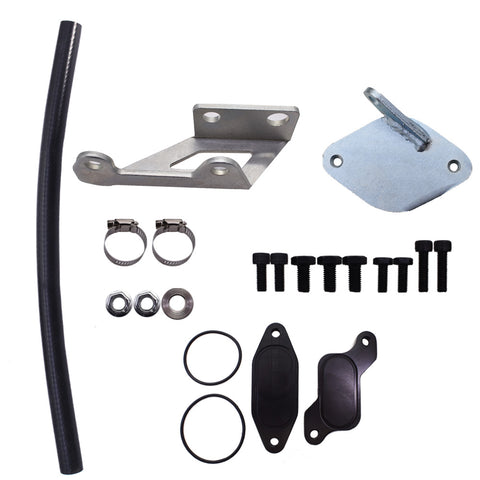Everyone is familiar with an automobile's engine and its function, but what about the rest of the vehicle? We'll talk about the importance of one component today: the EGR cooler kit. Understanding how an EGR cooler works will help you maintain your vehicle's emissions system. This article will explain what an EGR cooler is, how it functions, and why it is essential to the performance of your car. Continue reading to find out more about this little-known yet crucial part of your car!

What is an EGR cooler?
An EGR cooler is used to cool the exhaust gas from the internal combustion engine. Then, the engine is recirculated with the cooled exhaust gas, which can be used to cool the engine and increase efficiency.
How does an EGR cooler work?
An EGR cooler works by using a series of fins or plates to cool the exhaust gas as it passes through. The exhaust gas is first passed through the inlet side of the EGR cooler, where it is cooled by the fins or plates. The cooled exhaust gas then flows out through the outlet side of the EGR cooler and back into the engine.
The EGR cooler's part in emissions reduction
The EGR cooler aids in the reduction of emissions by lowering the temperature of the exhaust gases and preventing them from condensing and producing pollutants. Additionally, the EGR cooler can minimize the amount of heat lost through the exhaust system, which can also aid in enhancing fuel economy.
EGR cooler's effect on exhaust gas temperatures
The EGR cooler lowers the temperature of the exhaust gas before entering the engine. It can prevent pre-ignition and car knocking. The EGR cooler also helps to lower NOx emissions by lowering the combustion chamber's temperature.
Signs of a broken EGR cooler
If your EGR cooler is faulty, you may notice one or more of the following symptoms:
-engine temperature gauge higher than normal, or the "check engine" light may come on.
-noticing a decrease in power, particularly when climbing hills.
-experiencing increased fuel consumption.
-seeing exhaust gases coming from the cooling system or steam coming from the radiator.
To diagnose a faulty EGR cooler, your mechanic will hook up a diagnostic tool to your vehicle and run some tests. They may also do a visual inspection of the EGR cooler and related components.

EGR cooler maintenance and replacement
EGR coolers are devices that are used to cool exhaust gases from combustion engines. They work by recirculating a portion of the exhaust gas back through the engine cylinders. This process helps to reduce emissions and improve fuel economy. EGR coolers may require routine cleaning or replacement as they become dirty over time.
Many problems might arise when an EGR cooler gets soiled. Fuel economy loss is the most frequent issue. The EGR cooler becomes less effective in cooling the exhaust gases when it becomes dirty. As a result, the fuel efficiency will decrease and more heat will emit into the atmosphere. Furthermore, a dirty EGR cooler may cause car knock or noises from the engine.
An EGR cooler's cleaning is a rather easy process. First, the engine should be turned off and allowed to cool down. Next, remove the engine EGR cooler. Once it is removed, all of the dirt and debris should be cleaned from both the inside and outside of the cooler using a soft cloth or brush. The EGR cooler can then be reinstalled on the engine and tested to ensure proper operation.
Replacing an EGR cooler is generally only necessary if it is damaged beyond repair or cleaning. Most aftermarket companies supply complete replacement kits. These kits typically come with detailed instructions to make replacement easy for even the most inexperienced DIYers.
EGR cooler VS EGR valve
The EGR valve is a valve that controls the flow of exhaust gases from the engine to the EGR cooler. Both devices lower engine emissions.
The EGR cooler is located between the engine and the EGR valve. It has exhaust gas tubes surrounded with water or air, which can help cool down the gases. The EGR valve recycles the cooled gases.
The EGR valve is controlled by a computer, which regulates the amount of exhaust gas that is allowed to enter the EGR cooler. A computer regulates exhaust gas entering the EGR cooler via the EGR valve. The computer analyzes engine speed, load, and temperature when determining how much exhaust gas should be recirculated.
EGR systems reduce emissions and improve fuel efficiency. Cooling exhaust gases will reduce NOx emissions, and recirculating exhaust gas back into the engine will decrease fresh air intake, improving fuel economy.
Conclusion
EGR cooler kits improve engine performance and efficiency. It can lower pollutants and promote fuel economy. EGR coolers will cool exhaust gases before they enter the intake system, minimizing motor heat absorption. This reduces heat-related engine wear and increases performance and longevity.

